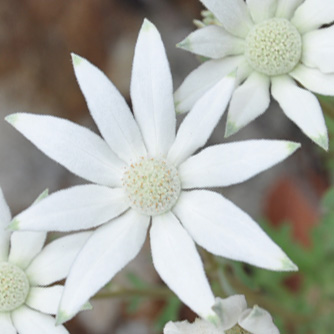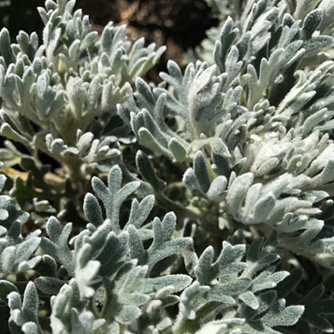Flannel Flowers
BackFlannel flowers (Actinotus helianthi) are delightful Australian natives that add softness to any garden with their velvety white flowers and silvery grey foliage. They make a wonderful addition to rockeries, cottage gardens or planted in large drifts in a native garden. They’ll happily grow in pots as well which makes them perfect for balconies and courtyards. Try teaming them up with the soft mauve flowers of the native brachyscome daisies for a stunning combination. Just gorgeous!
By the way there are other species of flannel flowers but Actinotus helianthi (and it’s cultivars) are the most commonly available type.
How To Grow Flannel Flowers
Flannel flowers are short lived natives that grow in full sun or part shade in just about all areas of Australia except for the tropics. They handle light frosts and benefit from wind protection as their branches are quite brittle.If you live in a very cold location think of them as an annual to enjoy during the warmer months.
They grow naturally in sandy, coastal positions and don’t like having wet feet. This means you need to plant into free draining soil to prevent rot problems. If your soil is not free draining then mound up the beds beforehand and work in some gypsum to help break up any clay. Do not attempt to grow them in soil which is compacted and drains poorly. Go for pots instead.

Velvety white flannel flowers
When grown in pots they don’t need a special native mix as normal premium potting mix will do. In areas with heavy rainfall you might need to boost the drainage of the mix by adding some sand.
Flannel flowers don’t like having their roots disturbed so take when removing them from the container and planting out. Water the plants in with OCP eco-seaweed to settle them quick as possible and encourage new roots to grow. Apply an organic mulch but leave a few centimetres of space around the stem otherwise you may encourage some nasty fungal problems to take hold.
Flannel flowers can also be sown from seed but the germination rate is often very low.
Fertilising and Maintaining Flannel Flowers
In the wild flannel flowers grow in low nutrient soils but research has shown they respond very well to being fertilised and are not phosphorus sensitive. So if you want more flowers and better growth apply OCP eco-seaweed and OCP eco-aminogro every 2-3 weeks. Then step back and watch your plants to thrive!
When watering, if possible, avoid the foliage to help prevent fungal problems and keep an eye on the drainage.

Amazing silvery foliage of the flannel flower plant
Regular tip pruning will encourage side branching and create a nice shaped plant with extra flowers. Remove spent flowers with secateurs to encourage more blooms. Some plants may develop yellow leaves at the base of the stems and these can be removed using secateurs.
Pests and Diseases of Flannel Flowers
There are a number of problems that can attack flannel flowers so be on the lookout for:
- Aphids – treat these common pests with OCP eco-oil.
- Scale - if they appear spray with a horticultural oil.
- Mealybugs – spray with OCP eco-neem and ensure the spray reaches down into the crevices.
- Caterpillars – caterpillars can have a devastating effect on flannel flowers so pick off these critters at first sight or spray with OCP eco-neem.
- Fungal problems – there are several different fungi that attack flannel flowers mostly resulting in wilting, dieback and root rot. Sometimes leaves may also yellow. It can be very difficult to rescue an infected plant so the best approach is a preventative one – ensure plants are grown in well draining soil with good air circulation around the foliage. Don’t overwater. Regularly apply OCP eco-seaweed and OCP eco-aminogro to build up plant vigour and improved resistance to fungal diseases.
- Plant Decline/Death – it is important to remember these are short-lived plants. If your plant is over 2 years old and it starts to go down hill it could just be at the end of its natural life and need replacing.

Remove spent flower stalks to encourage more flowers


